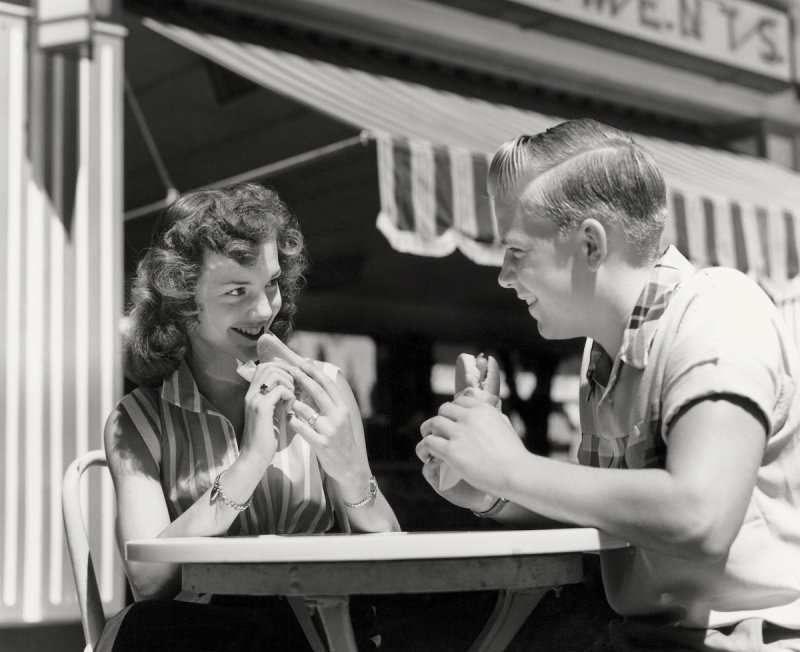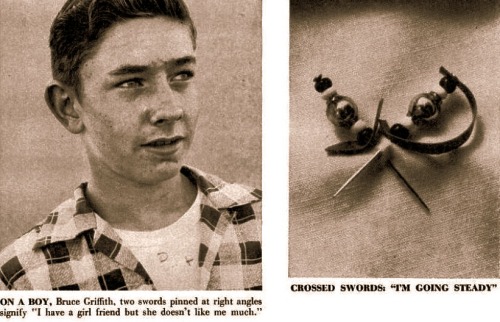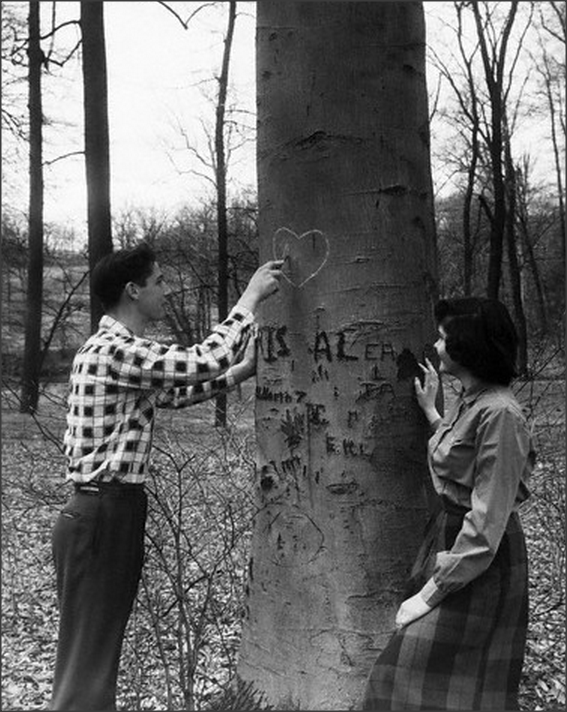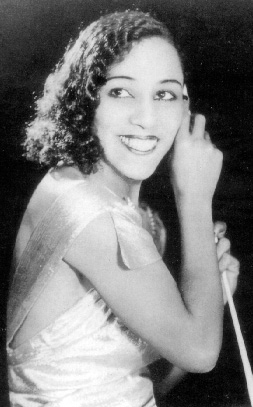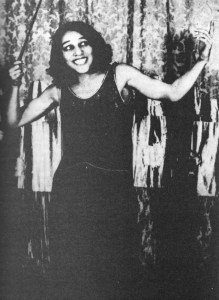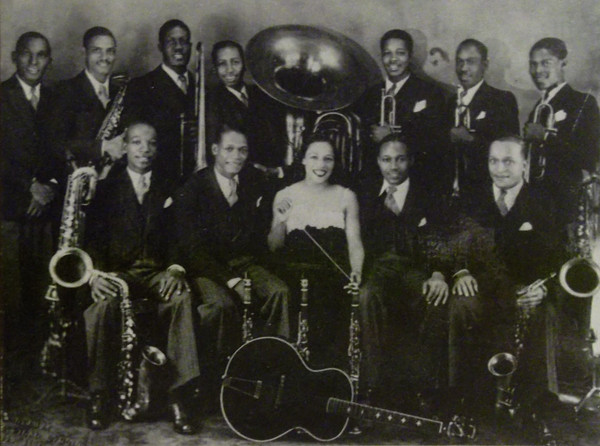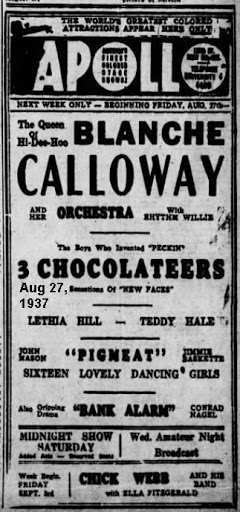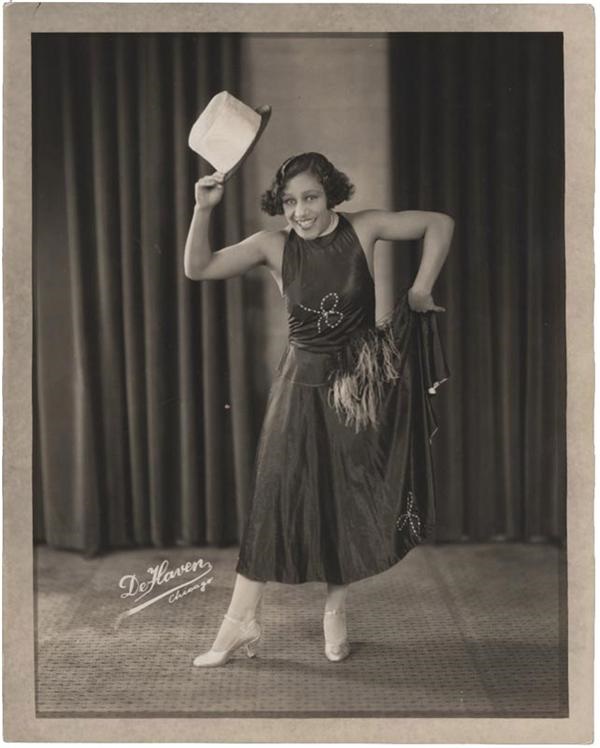The other day my brother posted a Facebook post asking why his teenage son insisted on switching sweaters with his girlfriend. This made me giggle AND got me to thinking about how teenagers have been doing goofy things to show affection towards their partner for years and years. Today’s post is going to focus on that…Teen Dating Fads & Expressions of Love in the 1940s and 1950s.
AND if I missed any examples (I know there is many), please share in the comments section below. I love hearing from my readers.
Teen Dating Fads & Expressions of Love in the 1940s & 1950s
Girl’s Hair-Do (aka bows in the hair) Reveals Love Life-1944
- Bow on the top of the head: means that Ann Mitchell is “out to get herself a man.”
- Bow worn in back: means that Betty is “not interested in men.”
- Bow worn on the right side: indicates that Becky is deeply in love.
- Bow worn at left: is a signal and challenge. It means Betty Chaney is “going steady.”

Teenage girl tying a scarf around the neck of her boyfriend was a fad
Vintage Photo: Atlanta, GA, US October 1947.
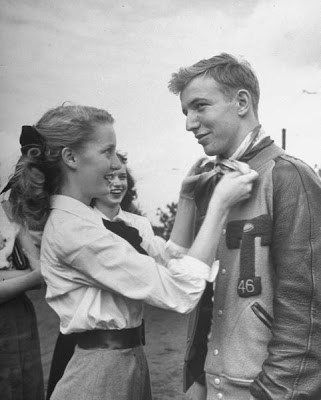
Dog Collar Anklet “puppy love” 1950s Fad
The fad hit the big time in 1953, and whether you wore your dog collar on the left or the right was an announcement to the world about whether you were single or whether you were going steady with someone, though which side meant what varied depending on location (Source).
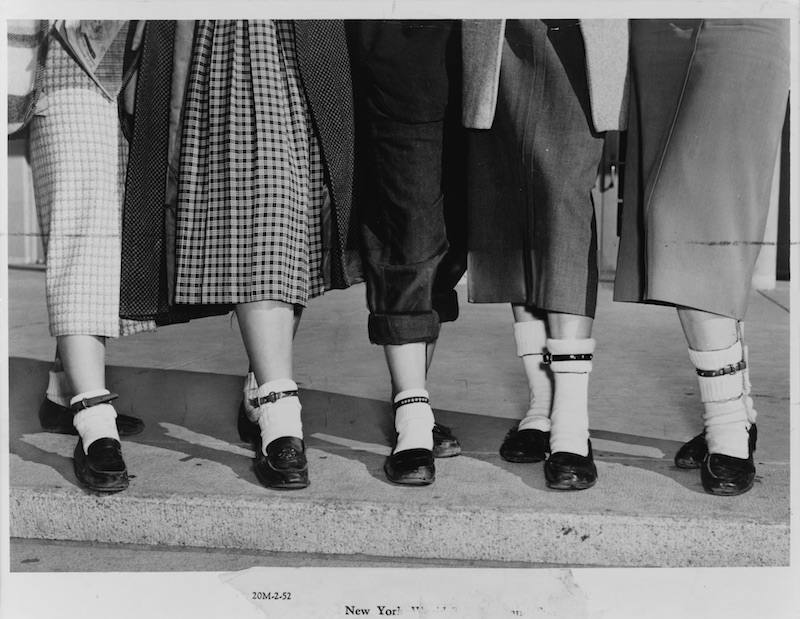
Source: janellereston.com
Getting “Pinned”
Another tradition included a young lady receiving a pin from her special someone from a fraternity house. After the pinning, that young lady awaits in her room to hear her special fraternity serenading her below her window (Source).
Source: MSU Archives
Remember School Rings?
Teens would show that they were”going steady” with someone with these pieces of jewelry. The guy would give the girl his ring and she would typically wear it as a necklace.
Here is a scene from Grease when Danny gives Sandy his ring (video clip).
Letterman Jacket “gifting”
Giving a girl you liked your Letterman Jacket was a symbol of affection and to tell the world “that is my girl”, as seen on this pretty young lady in the 1940s.
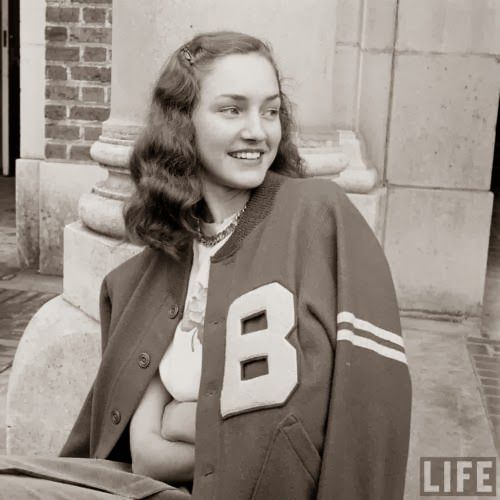
“Sword Signals”, 1957. Pins Tell Teen Date Status
The article states:
“In San Diego enterprising teenagers have abandoned the unsubtle old system of advertising their dating status by wearing (or not wearing) fraternity pins on their sweaters. Instead they have developed an ingenious signal code with homemade sword pins which, at a glance, will tell anyone who knows the code all he needs to know.
It all started innocently a few months ago when some fund-raising Girl Scouts began making the swords purely for ornament, out of pins, colored beads and plastic cord hilts, as part of a hobby-craft program, and selling them for $0.15 each. Soon local junior high schoolers started making them on their own and putting them together in patterns fraught with romantic significance. The fad, spreading furiously throughout San Diego County, threatens to head north to Hollywood, after which there may be no stopping it.”
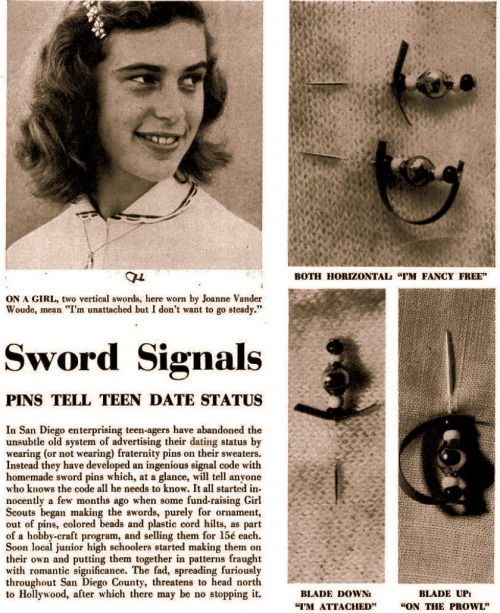
Source: Tumblr
Carving your initials in a tree
Carving your initials in a tree (Arborglyph) to show your love, has been going on for centuries. And yes this not necessarily just a teenager ritual but too cute to not add.
Source: Tumblr
Now for a chuckle (because I think we could all use a bit of distraction right now), here is a video on Teen Dating Dos and Don’ts in the 1940s.
Hope you enjoyed learning about some quirky ways teens in the 1940s and 1950s showed their dating status. As per the above, share any I missed in the comment section below!
FURTHER READING:
- Student Life – Vintage Photos
- Student Life Part 2 – Vintage Photos
- Vintage School Posts – Archived vintage blogs posts from the 1920s-1960s
Liz

